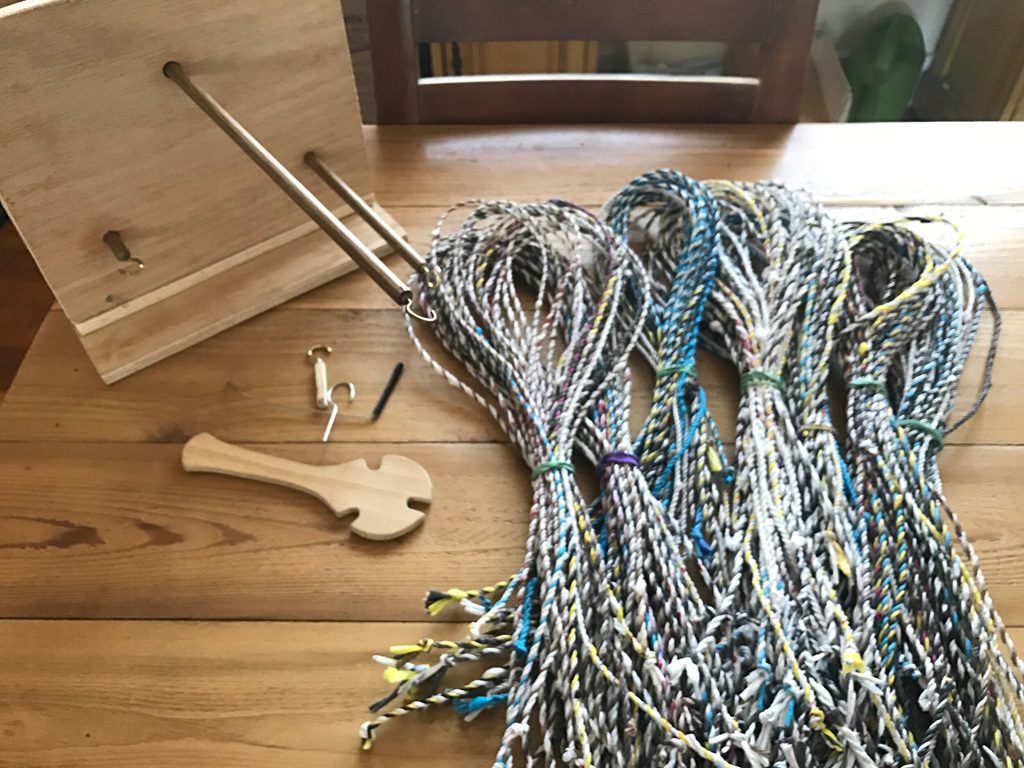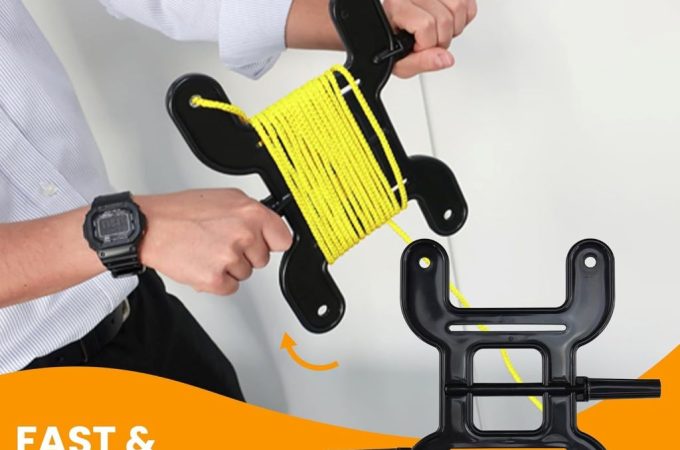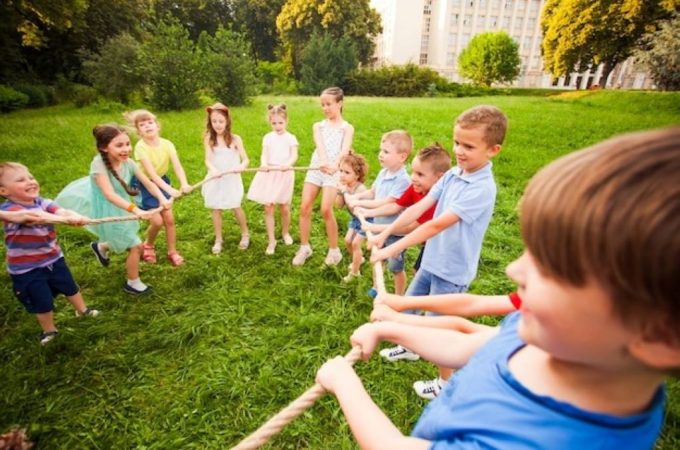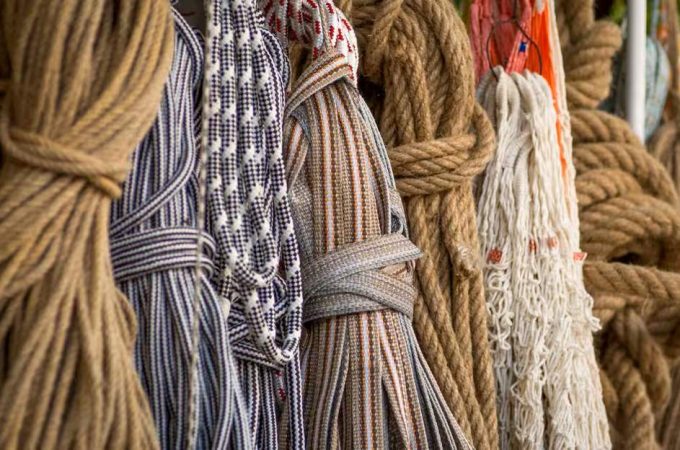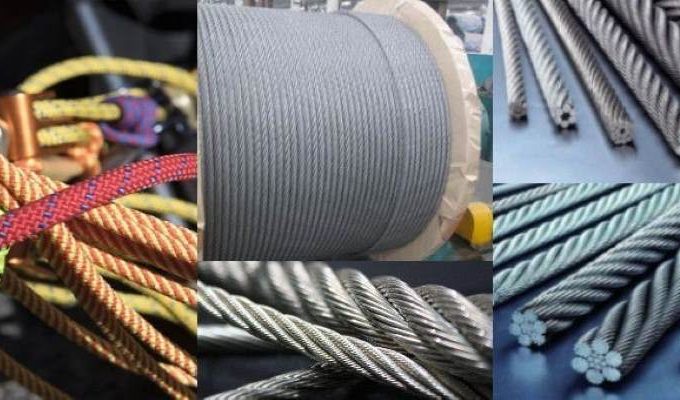
Transforming Trash: A Comprehensive Guide to Making Rope from Plastic Bags
In a world grappling with the ever-growing issue of plastic pollution, finding innovative ways to recycle and repurpose plastic waste is more critical than ever. One surprisingly versatile and durable material that often ends up clogging our landfills is the common plastic bag. But what if we told you these ubiquitous carriers could be transformed into something strong, functional, and surprisingly beautiful? Enter the world of “plarn” – plastic yarn crafted from plastic bags, ready to be crocheted, knitted, or woven into a myriad of creations, including a sturdy, weather-resistant rope.
Contents at a Glance
ToggleThis comprehensive guide will delve deep into the art of making rope from plastic bags, providing a step-by-step tutorial, exploring various techniques, and answering frequently asked questions. Whether you’re a seasoned crafter, an eco-conscious individual, or simply curious about this unique recycling method, join us as we unravel the potential hidden within your discarded plastic bags.
Why Make Rope from Plastic Bags?
Before we dive into the how-to, let’s explore the “why” behind this ingenious practice.
- Environmental Impact: Plastic bags pose a significant threat to our environment, taking hundreds of years to decompose and wreaking havoc on wildlife and ecosystems. By repurposing them into rope, we reduce plastic waste and minimize our environmental footprint.
- Durability and Versatility: Plarn rope is surprisingly strong and durable, making it suitable for various applications, from crafting sturdy shopping bags and baskets to creating functional items like doormats, plant hangers, and even pet toys.
- Cost-Effectiveness: This method offers a cost-effective alternative to purchasing commercial rope, allowing you to create a valuable resource from readily available materials.
- Creative Expression: Transforming discarded plastic bags into beautiful and functional rope is a fulfilling creative outlet, allowing you to express your artistic flair while contributing to a sustainable lifestyle.
Gathering Your Materials
The beauty of this project lies in its simplicity. Here’s what you’ll need:
- Plastic Bags: Collect a variety of plastic bags, including grocery bags, shopping bags, and bread bags. The thicker the plastic, the stronger your rope will be.
- Scissors: A sharp pair of scissors is crucial for cutting the bags into uniform strips.
- Ruler or Measuring Tape: While not essential, a ruler can help ensure consistency in your plarn strips.
- Crochet Hook or Knitting Needles: Depending on your preferred method, you’ll need a crochet hook (size H or larger recommended) or knitting needles (size 8 or larger) to create your rope.
Step-by-Step Guide: Creating Plarn and Rope
-
Preparing the Plastic Bags:
- Clean the Bags: Start by cleaning your plastic bags to remove any dirt or residue. A quick wipe with a damp cloth is usually sufficient.
- Smooth Out the Bags: Lay each bag flat and smooth out any wrinkles or creases.
- Cut Off the Handles and Bottom Seam: Remove the handles and the bottom seam of each bag, as these sections are often thicker and can create inconsistencies in your plarn.
-
Cutting the Bags into Strips:
- Fold the Bag: Fold the bag in half lengthwise, then fold it in half again. Continue folding until you have a long, narrow strip.
- Cut the Strips: Using your scissors, cut across the folded bag, creating loops of plastic. Aim for strips about 1-2 inches wide, depending on your desired plarn thickness.
- Connect the Loops: Open up each loop and connect them by looping one end through the other and pulling gently to secure.
-
Creating the Plarn:
- Continuous Loop Method: This method creates a long, continuous strand of plarn. Simply connect the loops as described above, ensuring a smooth and consistent flow.
- Individual Loops Method: Alternatively, you can keep the loops separate and join them as you crochet or knit, creating a more textured and unique plarn.
-
Making the Rope:
- Crocheting: If you’re crocheting, use a single crochet stitch to create a tight and dense rope. Start with a slip knot, then chain a few stitches to form the base of your rope. Continue crocheting in a spiral, increasing the number of stitches as needed to achieve your desired rope thickness.
- Knitting: For knitting, use a basic garter stitch (knit every row) to create a flat rope. Cast on a few stitches, then knit every row until your rope reaches the desired length.
- Braiding: If you prefer a no-tool approach, you can braid your plarn strands together to form a rope. Take three strands of plarn and braid them together, ensuring a tight and even braid.
-
Finishing Touches:
- Weaving in the Ends: Once you’ve reached your desired rope length, weave in any loose ends using a yarn needle or crochet hook.
- Optional: Adding a Core: For added strength and stability, consider adding a core to your rope. This can be a simple cord or even another strand of plarn.
Tips and Tricks for Plarn Perfection
- Experiment with Different Bags: Different types of plastic bags produce varying textures and strengths in your plarn. Experiment with different bags to find what works best for your project.
- Maintain Consistent Tension: When creating your plarn and rope, maintain consistent tension to ensure a uniform and even result.
- Join Loops Securely: Ensure your loops are joined securely to prevent your plarn from unraveling.
- Practice Makes Perfect: Like any new skill, creating plarn and rope takes practice. Don’t be discouraged if your first attempts aren’t perfect. Keep practicing, and you’ll soon be creating beautiful and functional rope from your discarded plastic bags.
Exploring Plarn Rope Applications
The versatility of plarn rope opens up a world of creative possibilities.
Here are just a few ideas to inspire you:
- Functional Items: Craft sturdy shopping bags, durable doormats, stylish plant hangers, and even comfortable pet beds.
- Home Decor: Create unique baskets, coasters, placemats, and wall hangings to add a touch of eco-conscious flair to your home.
- Fashion Accessories: Design eye-catching bracelets, necklaces, and belts using colorful plarn.
- Gardening: Utilize plarn rope for trellises, plant ties, and hanging baskets in your garden.
Reviews: What Crafters Are Saying
The art of making rope from plastic bags has garnered praise from crafters worldwide.
Here’s what some enthusiasts have to say:
- “I was amazed at how strong and durable the rope turned out to be! I’ve made several shopping bags and a doormat, and they’ve held up incredibly well.” – Sarah M.
- “This is such a fantastic way to recycle plastic bags. I love that I can turn something that would have ended up in the landfill into something beautiful and useful.” – John D.
- “I was initially intimidated by the process, but it’s surprisingly easy once you get the hang of it. I’m now addicted to making plarn rope and can’t wait to try more projects.” – Emily R.
Related: Tie Up Summer Style: Your Complete Guide to Making Rope Sandals
Frequently Asked Questions (FAQ)
-
What type of plastic bags work best for making rope?
Thicker plastic bags, such as grocery bags and shopping bags, generally produce stronger and more durable rope. However, you can experiment with different types of bags to achieve various textures and effects.
-
How much rope can I make from one plastic bag?
The amount of rope you can make from one bag depends on the size of the bag and the thickness of your plarn strips. On average, a standard grocery bag can yield approximately 10-15 feet of plarn.
-
Is plarn rope waterproof?
Yes, plarn rope is inherently waterproof, making it suitable for outdoor applications and projects that may come into contact with moisture.
Related: Tie the Knot Your Way: A Guide to DIY Handfasting Cords and Rituals
-
Can I wash plarn rope?
Absolutely! Plarn rope can be easily washed with mild soap and water. Simply hand wash the rope and lay it flat to dry.
-
Where can I find more plarn rope project ideas?
Numerous online resources, including crafting blogs, video tutorials, and social media groups, offer a wealth of inspiration and project ideas for plarn rope creations.
Conclusion
Making rope from plastic bags is a rewarding and environmentally conscious endeavor that transforms everyday trash into a valuable resource. By following this comprehensive guide, you can master the art of plarn and create a variety of functional and beautiful items while contributing to a more sustainable future. So, gather your plastic bags, unleash your creativity, and embark on this fulfilling journey of turning trash into treasure.

